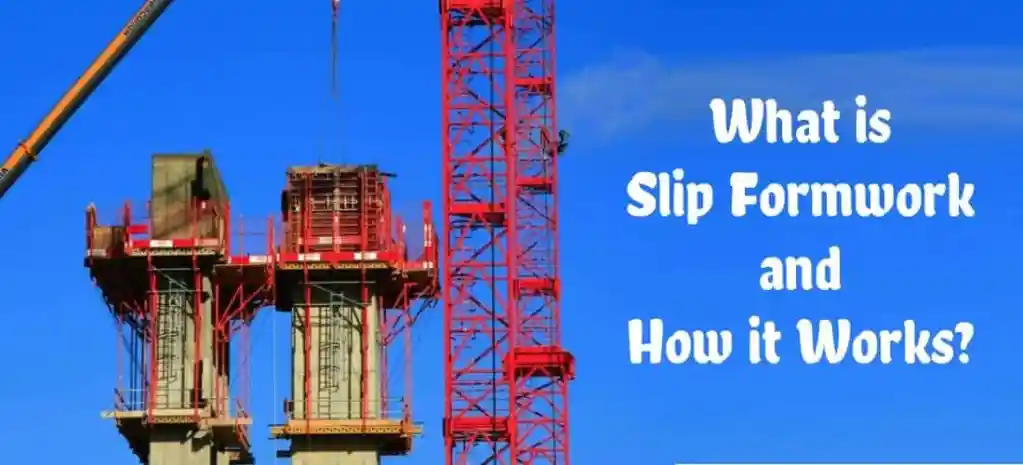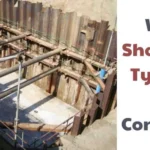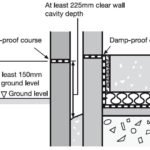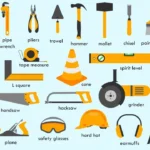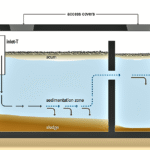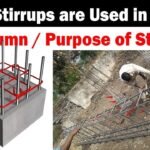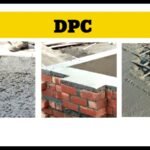Slip formwork is a high-speed, continuous concrete casting method. It is ideal for vertical and horizontal concrete structures like silos, chimneys, bridge piers, and elevator shafts. This technique has gained popularity in Indian infrastructure due to its efficiency, smooth finish, and time-saving nature.
In this guide, we will explore:
- What is slip formwork?
- Types of slip form systems
- Key features
- Advantages and disadvantages
- Indian applications
- Cost insights
- FAQs
What is Slip Formwork in Construction?
Slip formwork is a moving formwork system used to cast concrete structures continuously without joints. The formwork “slips” upwards (or sideways in some cases) as fresh concrete is poured. The speed of the slip matches the setting rate of concrete.
This method is widely used in India for:
- Industrial chimneys
- Silos
- Water tanks
- Core walls of high-rise buildings
- Flyover piers
- Roadside barriers
Types of Slip Formwork Systems
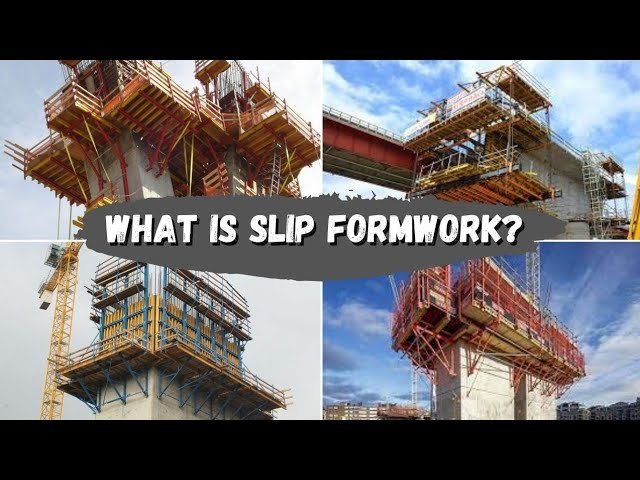
Different types of slip formwork are used depending on structure and geometry.
| Type | Application |
|---|---|
| Vertical Slip Formwork | Silos, chimneys, building cores |
| Horizontal Slip Formwork | Road barriers, pavements, curb channels |
| Tapered Slip Formwork | Conical towers or structures with narrowing |
| Curved Slip Formwork | Circular tanks, egg-shaped silos |
| Cantilever Slip Form | Overhanging elements, bridge segments |
Characteristics of Slip Formwork
Slip form systems differ from traditional formwork in many ways:
- Continuous concrete casting – no cold joints
- Fast construction cycle – 24/7 work possible
- Steel formwork panels – reusable and durable
- Climbing mechanism – hydraulic or mechanical jacks
- Built-in work platforms – safe for labourers
- Requires skilled crew – for smooth operation
This method is especially useful when constructing tall vertical elements or long linear structures.
Advantages of Slip Formwork in India
| Advantage | Details |
|---|---|
| Speed | Up to 300 mm/hour casting rate |
| Smooth Finish | No need for plaster in most cases |
| Labour Saving | Reduced manpower due to mechanization |
| No Cold Joints | Continuous pour improves structural strength |
| Less Formwork Required | Equipment is reused multiple times |
| Ideal for RCC Tall Structures | Used in lift cores, towers, silos, bridge piers |
| Cost-effective for Large Projects | High initial cost, but better ROI over time |
Slip formwork construction is four to five times faster than conventional shuttering.
Also Read Approximate Budget for 1000 Sq. Ft House Construction Cost in India
Disadvantages of Slip Formwork
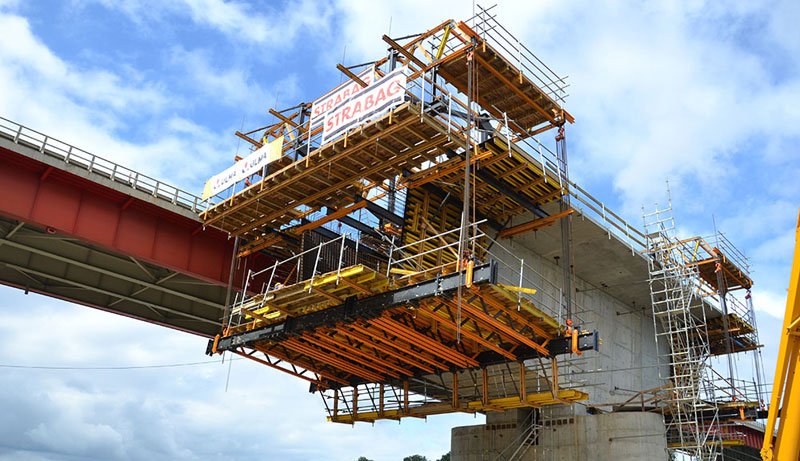
Despite its benefits, slip formwork also has some limitations.
| Disadvantage | Details |
|---|---|
| High Initial Setup Cost | Formwork system and jacks are expensive |
| Needs Skilled Labour | Requires experienced operators and engineers |
| Continuous Pouring Required | Stoppage can lead to cracks or bulging |
| Not Suitable for All Shapes | Works best for repetitive and symmetrical structures |
| Complicated Logistics | Needs 24/7 power, material supply, and safety support |
Slip formwork is not economical for short buildings or irregular geometry.
Concrete Mix Design for Slip Form Construction
Slip form concrete must have:
- Early setting time – to support lifting form
- Low slump – around 40 to 70 mm
- High workability – for smooth pumping
- Minimal segregation – for strength uniformity
Indian contractors typically use M30 or M35 grade concrete with added accelerators in slipform projects.
Key Components of a Slip Form System
| Component | Description |
|---|---|
| Form Panels | Steel walls that shape the concrete |
| Yoke Frames | Support the form and transfer loads |
| Climbing Mechanism | Lifts the formwork (hydraulic or manual) |
| Working Platforms | For workers to stand and place reinforcement |
| Scaffold Brackets | Provide access and safety for operators |
| Reinforcement Holders | Guides steel placement during continuous lift |
Each component is crucial to maintain form stability, alignment, and safety.
Applications of Slip Formwork in Indian Construction
Slip form is extensively used in Indian infrastructure projects:
| Project Type | Application Examples |
|---|---|
| Power Plants | Chimneys, cooling towers |
| Agriculture Industries | Grain silos, fertilizer tanks |
| Transport Infrastructure | Bridge piers, flyover columns |
| Urban High-Rises | Elevator cores, stair shafts |
| Public Utilities | Water towers, STP/ETP shafts |
In urban India, slip formwork is increasingly used for Metro station cores, smart city infrastructure, and tall buildings.
Cost of Slip Formwork in India (2025 Estimate)
| Item | Cost Range (Approximate) |
|---|---|
| Slip Form System Rental | ₹200 – ₹400 per sq.ft/month |
| Hydraulic Jacking Equipment | ₹3 lakh – ₹6 lakh per set |
| Labour & Operation Charges | ₹150 – ₹300 per sq.ft |
| Concrete (M30 Grade) | ₹6,000 – ₹7,500 per cum |
| Setup Time | 7–10 days depending on size |
Though expensive initially, slip form saves weeks of time and brings long-term savings for large projects.
Slip Form vs Traditional Formwork
| Factor | Slip Formwork | Traditional Formwork |
|---|---|---|
| Speed | Very fast | Moderate |
| Surface Finish | Excellent | Requires plastering |
| Labour Requirement | Less | More |
| Joints in Structure | None | Present |
| Initial Cost | High | Low |
| Suitability | Tall, vertical or linear works | All types of structures |
Frequently Asked Questions (FAQs)
Q1: What is the ideal concrete for slip form construction?
A: Low slump concrete (40–70 mm) with fast setting time, such as M30 or M35 with admixtures.
Q2: Is slip formwork suitable for small residential buildings?
A: No. It is best for high-rise or industrial projects with repetitive geometry.
Q3: How much time does slip form construction save?
A: It can cut construction time by 50% or more compared to conventional methods.
Q4: Is slip formwork used in Indian Metro projects?
A: Yes. It is commonly used in Metro shaft cores and tunnel access structures.
Q5: Do I need a crane for slip form?
A: No crane is required once the climbing jacks are in place.
Conclusion
Slip formwork is revolutionizing construction in India. It brings unmatched speed, surface finish, and efficiency for concrete structures. From chimneys and silos to high-rise cores and bridges, this technique delivers strength, durability, and speed.
For contractors and developers working on large infrastructure projects, investing in slip formwork systems is a smart and future-ready choice.
